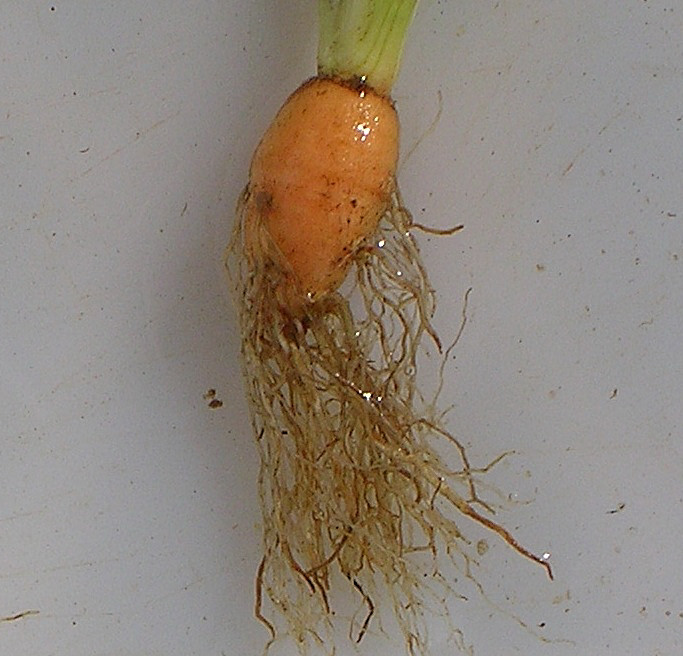Symptoms
Infested plants grow poorly and crop growth is uneven (Figure 2).

Plant leaves become chlorotic (pale, yellowing) and crop yield is reduced. Crops may wilt in moist soils.
Affected roots have dark brown/reddish lesions on them which can be distinct or extensive in size (Figure 3).
Roots containing P. penetrans may be thin and the number of lateral roots reduced.
Infested carrots may have delayed maturity, branching of taproots (Figure 4) and prolific lateral root production (Figure 5).


Pratylenchus penetrans causes similar visual symptoms to other root lesion nematode species but preferred hosts may differ.
Potato tubers show symptoms similar to common scab (Streptomyces scabies). Internationally it is estimated that the economic damage threshold for potatoes is 100-250 nematodes/250g soil. P. penetrans survives storage of potatoes and new infections may come from infested seed.
Pratylenchus penetrans may assist secondary invasion by other soil micro-organisms such as Verticillium dahliae and Fusarium spp. Overseas, a combination of V. dahliae and root lesion nematode has been shown to increase the severity of ‘early dying syndrome’ in potato crops where plants yellow and die early. In eastern Australia, V. dahliae and root lesion nematode were found in 80% and 92% of potato growing fields, indicating that ‘early dying’ could be an issue in Australia.
